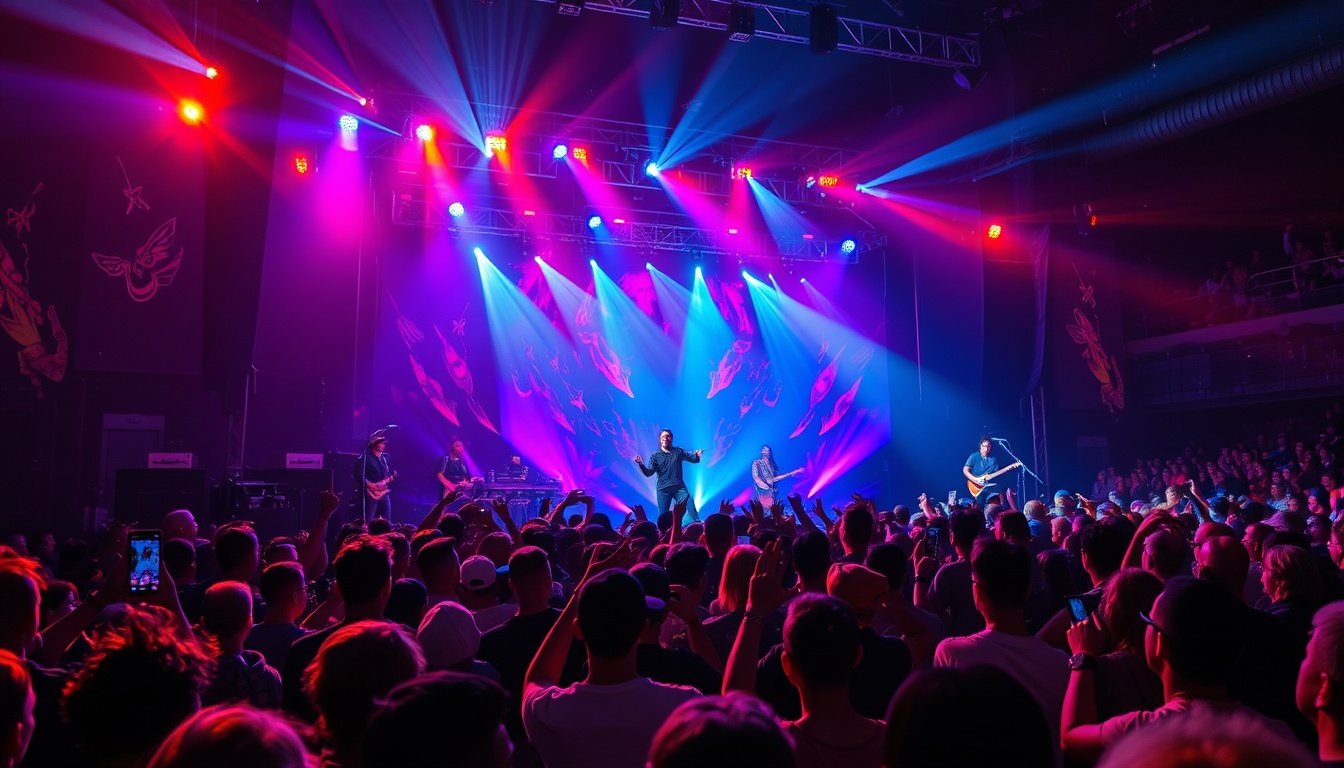In recent years, the landscape of live concerts has undergone a dramatic transformation, shifting from intimate gatherings where fans could connect with their favorite artists to massive spectacles showcasing celebrity friendships and spectacular productions.
This evolution has not only changed how we experience music but has also redefined the relationship between artists and their audiences.
In this article, we delve into the ways in which concerts have evolved in the modern era, highlighting the impact of social media, the aspirations of artists, and the expectations of fans.
Read on to explore how these elements have shaped the concert experience today.

Key Takeaways
- Concerts have evolved from intimate gatherings to large-scale spectacles showcasing celebrity connections.
- Social media has significantly transformed how fans experience and engage with concerts.
- The emphasis on celebrity friendships at concerts reflects a broader shift in the music industry towards branding and visibility.
The Shift from Intimacy to Spectacle
The shift from intimacy to spectacle in the live concert landscape has been a notable trend over recent years.
Historically, concerts served as intimate gatherings where artists connected with fans on a personal level, often sharing stories and experiences that deepened the fan-artist relationship.
However, according to a recent article by People, this dynamic has evolved into a grandiose showcase of celebrity interactions and lavish productions, reminiscent of a parade rather than a heartfelt performance.
Today’s audiences attend concerts not just for the music, but to witness the spectacle of their favorite stars mingling with other celebrities, which often steals the focus from the music itself.
As artists leverage social media to enhance their public personas, fans find themselves longing for the authenticity that characterized earlier concert experiences.
In this new era, live music events seem to prioritize visual appeal and star-studded moments over the emotional connection that once defined them.
For concertgoers seeking a more personal experience, this transformation raises questions about the future of live performances in an industry increasingly dominated by celebrity culture.
The Role of Social Media in Transforming Concert Experiences
In today’s digital age, social media plays a crucial role in transforming the concert experience, shaping how fans engage with artists and each other during live events.
Platforms like Instagram, Twitter, and TikTok allow fans to capture and share real-time moments from concerts, creating a vibrant online community that extends beyond the venue.
This immediate sharing not only amplifies the concert experience for those present but also allows those unable to attend to feel connected through live updates, stories, and shared posts.
Additionally, artists leverage social media to promote their shows, engage with fans, and create unique promotional content that can enhance the anticipation of a concert.
For many attendees, the concert becomes as much about the online presence and content created during the event as it is about the live performance, thus blurring the lines between physical and digital fan experiences.
The rise of social media also leads to increased visibility for opening acts and new artists, as fans share their experiences widely, often leading to the discovery of emerging talent.
Therefore, social media not only shapes the atmosphere of live concerts but also revolutionizes the way artists and fans interact, making it an integral part of the modern concert landscape.

